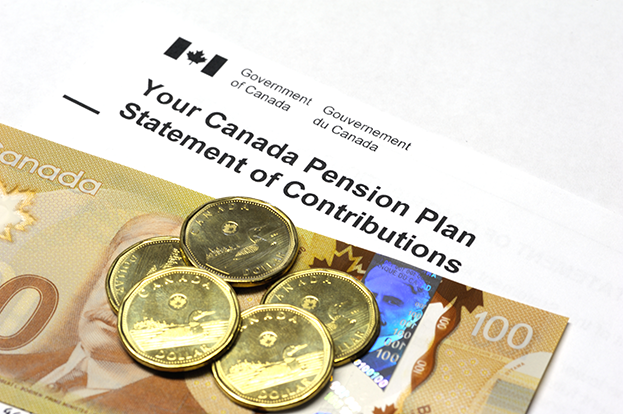Finance Basics: Get to know RRSPs
Retirement might seem like a long way away for some, but it may be here sooner than you think. Government benefits like the Canada Pension Plan (CPP) and Old Age Security (OAS) help, but for the average Canadian retiree they most likely won’t be enough. That’s when Registered Retirement Savings Plans (RRSPs) come in handy.
RRSPs can help ensure you have enough money to live comfortably in your golden years. Let’s take a look at the basics of RRSPs and how they work.
What is an RRSP?
An RRSP is a government-approved plan that helps Canadians save towards retirement. You won’t pay tax on the money you contribute or the income earned form investments until you’re ready to make a withdrawal. By contributing to an RRSP, you can reduce the amount of income tax you’ll pay during your working years and put money away for retirement.
When you contribute money to your RRSP, you can claim a tax deduction on your income tax return. When you file your tax return, you may be eligible to receive a tax refund from the Canada Revenue Agency (CRA).
How does an RRSP work?
It’s important to note that RRSPs aren’t investments themselves, and you can’t “buy” an RRSP. In actuality, you will be purchasing investments to hold inside your RRSP.
There could be a variety of investments in your RRSP including mutual funds, stocks, bonds, savings accounts and Guaranteed Investment Certificates (GICs). The key benefit is that as long as you hold these investments inside your RRSP, you won’t have to pay tax until you eventually withdraw the money.
What are some of the rules of an RRSP?
RRSPs are registered accounts, which is a fancy way of saying there are certain rules you need to follow. One of these rules is that you’re only able to contribute a certain amount to your RRSP each year.
So how much can you contribute to an RRSP account? Your available “contribution room” can be found on your Notice of Assessment or listed in your CRA My Account. And if in doubt, you can always call CRA’s Tax Information Phone Service (TIPS) to ask what your RRSP contribution limit is for the year.
Note that you’ll want to pay attention to your RRSP contribution limit, as you could face a penalty for contributing too much.

How do you open an RRSP?
You can open an RRSP by setting up an appointment at your financial institution. During this appointment, you’ll discuss important topics like your investment knowledge, time horizon and risk tolerance. You’ll also discuss the type of investments you’d like to hold inside your account.
Next, you’ll need to sign and complete paperwork to open an RRSP and choose the bank account from which you’d like to make your initial contribution. You might also consider setting up regular Pre-Authorized Contributions (PAC). This makes it an easier process rather than remembering to contribute once a year before the RRSP deadline.
Ready for the next step? Book an appointment today with one of our RRSP experts.
Are there dates and deadlines to consider?
The deadline for contributing to your RRSP is before the first 60 days of the year if you want it to apply to your previous year’s tax return. (Most years, that means you’ll need to contribute by the end of February.) Any RRSP contributions made after this date will count towards next year’s tax return.
As long as you have earned income, you can continue to contribute to your RRSP up until December 31 in the year that you turn 71 years old.
Are RRSPs just for retirement savings?
Despite their name, RRSPs are not just for retirement savings. In fact, these accounts can be used for other purposes such as saving towards higher education or a down payment for your first home.
For instance, you can borrow up to $20,000 from your RRSP under the Lifelong Learning Plan (LLP) for going back to school. First-time homebuyers can also borrow up to $35,000 ($70,000 combined for couples) under the Home Buyers’ Plan (HBP) to help come up with a down payment. However, keep in mind that any of these amounts do need to be paid back, otherwise you’ll lose the RRSP contribution room forever and may be required to pay taxes on the income.
Which is better: RRSPs or TFSAs?
Both plans have advantages. Meet with an ACU advisor today to find out what approach is best for you.
Related: RRSP vs. TFSA — Which is right for you?
Helping achieve financial success in your golden years
Opening an RRSP is a great first step. But it’s equally important to choose investments that are in line with your risk tolerance and time horizon. When choosing your investments, diversification is also key. “Don’t put all your eggs in one basket,” as the saying goes. This especially holds true with your RRSP.

Although RRSPs alone may not guarantee a comfy lifestyle in retirement (it also depends on how your investments perform), getting in the habit of regularly contributing to your RRSP now can go a long way in improving your chances of living a comfortable lifestyle in retirement.

Everything you wanted to know about RESPs
Up Next
Celebrating the 10th anniversary of student-run credit union
Just over 10 years ago, a survey circulated at Winnipeg’s Technical Vocational High School. The results showed that students at the school, commonly known as Tec Voc, felt short-changed—they were…
Kilter Brewing Co. serves up craft beer and community connection in St. Boniface
Deep in the heart of St. Boniface, Kilter Brewing Company is a hidden treasure—an oasis for Winnipeggers to escape their day-to-day routines, enjoy craft beer and connect with their community….
How to use a mortgage calculator to budget better
Learn how to use ACU’s mortgage calculator to figure out how much mortgage you can afford, and what budget you should set before you start house hunting. A mortgage lender…




